-
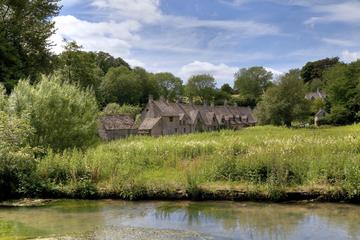 Bibury
Bibury Bibury is a village in the Cotswolds of England and the perfect place to enjoy the beauty of Gloucestershire. It lies along the River Coln, which is a tributary of the River Thames. Visitors can stroll down Arlington Row to admire cottages that were built in the late 1300s as monastic wool
Bibury
Bibury Bibury is a village in the Cotswolds of England and the perfect place to enjoy the beauty of Gloucestershire. It lies along the River Coln, which is a tributary of the River Thames. Visitors can stroll down Arlington Row to admire cottages that were built in the late 1300s as monastic wool
-
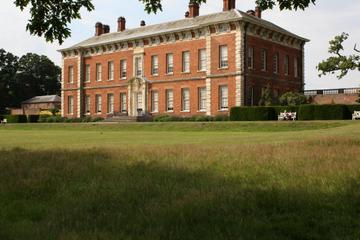 Beningbrough Hall
Beningbrough Hall Built in 1716 on the Yorkshire meadows, Beningbrough Hall served as a family home, inherited and passed down and around over many generations during the 1700 and 1800s. During the Second World War Beningbrough was called into service and used to house airmen from bomber squadrons
Beningbrough Hall
Beningbrough Hall Built in 1716 on the Yorkshire meadows, Beningbrough Hall served as a family home, inherited and passed down and around over many generations during the 1700 and 1800s. During the Second World War Beningbrough was called into service and used to house airmen from bomber squadrons
-
 Bassenthwaite Lake
Bassenthwaite Lake One of the Lake District’s largest lakes at 6.4 km in length, Bassenthwaite Lake is best known for its abundant native wildlife, now preserved as part of the region’s only wetland nature reserve. Osprey, Grasshopper Warbler, Curlew, Greylag and Meadow Pipit are among the bird sp
Bassenthwaite Lake
Bassenthwaite Lake One of the Lake District’s largest lakes at 6.4 km in length, Bassenthwaite Lake is best known for its abundant native wildlife, now preserved as part of the region’s only wetland nature reserve. Osprey, Grasshopper Warbler, Curlew, Greylag and Meadow Pipit are among the bird sp
-
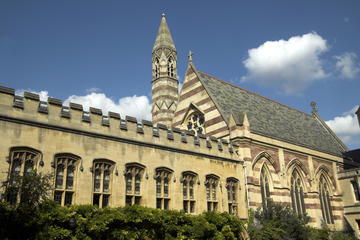 Balliol College
Balliol College Balliol College is the oldest continuously operated college in the University of Oxford and was created around 1263. The oldest parts of the college include the north and west sides of the front quadrangle and the medieval hall. The Balliol Library holds a collection of medieval ma
Balliol College
Balliol College Balliol College is the oldest continuously operated college in the University of Oxford and was created around 1263. The oldest parts of the college include the north and west sides of the front quadrangle and the medieval hall. The Balliol Library holds a collection of medieval ma
-
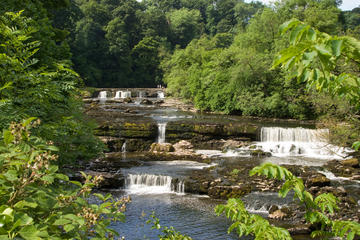 Aysgarth Falls
Aysgarth Falls Immortalized on-screen in Kevin Costner’s Robin Hood Prince of Thieves and famously inspiring artists and poets like Ruskin, Turner and Wordsworth, the Aysgarth Falls have long been renowned as a local beauty spot. The three-tiered falls are undeniably photogenic, with thousands of
Aysgarth Falls
Aysgarth Falls Immortalized on-screen in Kevin Costner’s Robin Hood Prince of Thieves and famously inspiring artists and poets like Ruskin, Turner and Wordsworth, the Aysgarth Falls have long been renowned as a local beauty spot. The three-tiered falls are undeniably photogenic, with thousands of
-
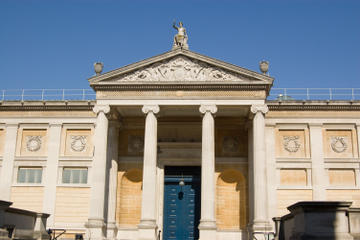 Ashmolean Museum
Ashmolean Museum Not only Britain’s oldest public museum but also among the oldest in the world, the Ashmolean is more than just a museum – it’s an internationally renowned institution and one of Oxford’s most visited attractions. Founded in 1683, the esteemed museum is one of four of the Universi
Ashmolean Museum
Ashmolean Museum Not only Britain’s oldest public museum but also among the oldest in the world, the Ashmolean is more than just a museum – it’s an internationally renowned institution and one of Oxford’s most visited attractions. Founded in 1683, the esteemed museum is one of four of the Universi
-
 Ascot
Ascot A wealthy suburban town in Berkshire, Ascot is west of London and is mightily popular with affluent types who commute into London daily. It is close to Windsor Castle, the Great Park and Legoland but is chiefly renowned for its racecourse, which was founded by Queen Anne in 1711. Regular hor
Ascot
Ascot A wealthy suburban town in Berkshire, Ascot is west of London and is mightily popular with affluent types who commute into London daily. It is close to Windsor Castle, the Great Park and Legoland but is chiefly renowned for its racecourse, which was founded by Queen Anne in 1711. Regular hor
-
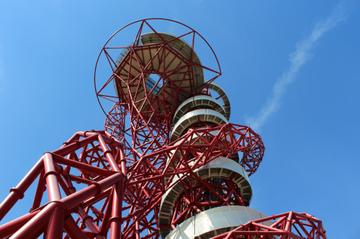 ArcelorMittal Orbit
ArcelorMittal Orbit A spiraling red steel tower looming 114 meters over the Queen Elizabeth Olympic Park, the ArcelorMittal Orbit’s bold design has polarized opinions since its conception. There’s no denying, however, that it’s an impressive feat of structural engineering and well on its way to be
ArcelorMittal Orbit
ArcelorMittal Orbit A spiraling red steel tower looming 114 meters over the Queen Elizabeth Olympic Park, the ArcelorMittal Orbit’s bold design has polarized opinions since its conception. There’s no denying, however, that it’s an impressive feat of structural engineering and well on its way to be
-
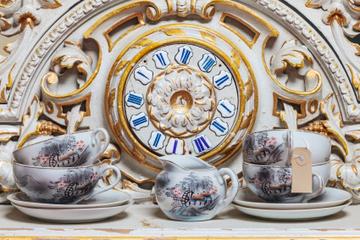 Apsley House (Wellington Museum)
Apsley House (Wellington Museum) Few addresses hold the majesty of ‘Number One London’, the official address for the central London abode of Apsley House, located at Hyde Park Corner. Once home to the Duke of Wellington, the Georgian manor was built between 1771-1778 and remains remarkably preserv
Apsley House (Wellington Museum)
Apsley House (Wellington Museum) Few addresses hold the majesty of ‘Number One London’, the official address for the central London abode of Apsley House, located at Hyde Park Corner. Once home to the Duke of Wellington, the Georgian manor was built between 1771-1778 and remains remarkably preserv
-
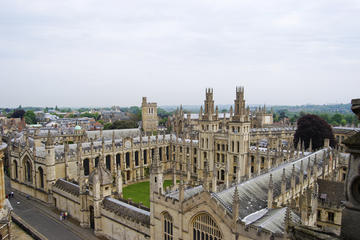 All Souls College
All Souls College One of the constituent colleges of the University of Oxford is All Souls College, though the official name is the Warden and the College of the Souls of All Faithful People Deceased in the University of Oxford. It is primarily a graduate research institution with no undergraduate
All Souls College
All Souls College One of the constituent colleges of the University of Oxford is All Souls College, though the official name is the Warden and the College of the Souls of All Faithful People Deceased in the University of Oxford. It is primarily a graduate research institution with no undergraduate
-
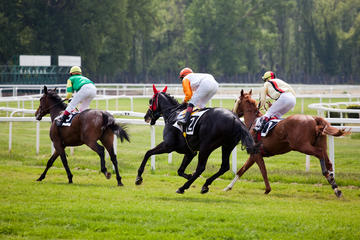 Aintree Racecourse
Aintree Racecourse A Liverpool and sporting institution since the 1830s, Aintree Racecourse is synonymous with Britain’s most famous horserace, the legendary Grand National.The Grand National is a particularly difficult steeplechase for horses and riders, with 16 infamous obstacles to leap includi
Aintree Racecourse
Aintree Racecourse A Liverpool and sporting institution since the 1830s, Aintree Racecourse is synonymous with Britain’s most famous horserace, the legendary Grand National.The Grand National is a particularly difficult steeplechase for horses and riders, with 16 infamous obstacles to leap includi
-
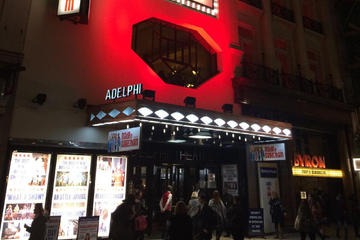 Adelphi Theatre
Adelphi Theatre Although initially founded in 1806, the Adelphi Theatre opened under its current name in 1819, and quickly made a name for itself, hosting stage adaptations of Charles Dickens and Walter Scotts works. Today, the historic theatre remains a leading venue in London’s West End theater
Adelphi Theatre
Adelphi Theatre Although initially founded in 1806, the Adelphi Theatre opened under its current name in 1819, and quickly made a name for itself, hosting stage adaptations of Charles Dickens and Walter Scotts works. Today, the historic theatre remains a leading venue in London’s West End theater
-
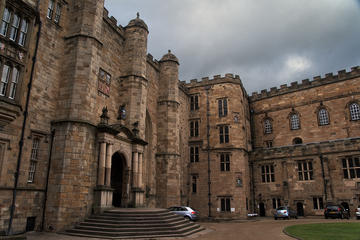 Durham Castle
Durham Castle Durham Castle was built in 1072 by the order of William the Conqueror, who intended it as a statement of power over the local Saxons as well as a bulwark against Scotland to the north. Like Windsor Castle, it is an outstanding example of the “motte-and-bailey” style of fortress, wher
Durham Castle
Durham Castle Durham Castle was built in 1072 by the order of William the Conqueror, who intended it as a statement of power over the local Saxons as well as a bulwark against Scotland to the north. Like Windsor Castle, it is an outstanding example of the “motte-and-bailey” style of fortress, wher
-
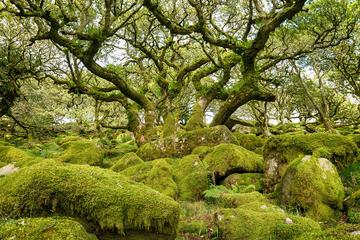 Wistmans Wood
Wistmans Wood At the heart of the Dartmoor National Park, the ancient oak forest of Wistman’s Wood is one of few woods left in England that date back to prehistoric times, and it’s an eerily beautiful sight. With its dramatically twisted oak trees climbing with lichen, giant moss-blanketed boulder
Wistmans Wood
Wistmans Wood At the heart of the Dartmoor National Park, the ancient oak forest of Wistman’s Wood is one of few woods left in England that date back to prehistoric times, and it’s an eerily beautiful sight. With its dramatically twisted oak trees climbing with lichen, giant moss-blanketed boulder
-
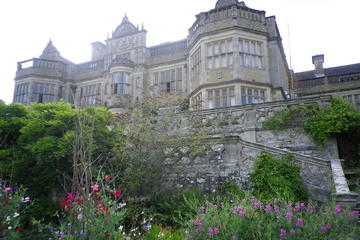 Stokesay Court
Stokesay Court With its stately Jacobean-style façade, magnificent oak furniture and expanse of rolling parklands, Stokesay Court is a striking example of a late-Victorian English country estate. Built by the Allcroft family in the 19th-century, the estate remains a family home to this day, despit
Stokesay Court
Stokesay Court With its stately Jacobean-style façade, magnificent oak furniture and expanse of rolling parklands, Stokesay Court is a striking example of a late-Victorian English country estate. Built by the Allcroft family in the 19th-century, the estate remains a family home to this day, despit
-
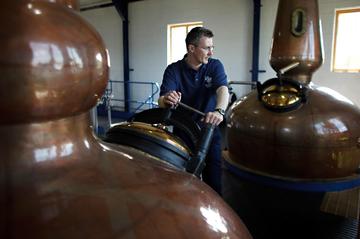 St George’s Distillery
St George’s Distillery The making of whisky is more often associated with Scotland than England, but there is one distillery south of the border – and an award-wining one at that – located in the rural flatlands of Norfolk. Winners of the European Whisky of the Year award for 2015, the owners of T
St George’s Distillery
St George’s Distillery The making of whisky is more often associated with Scotland than England, but there is one distillery south of the border – and an award-wining one at that – located in the rural flatlands of Norfolk. Winners of the European Whisky of the Year award for 2015, the owners of T
-
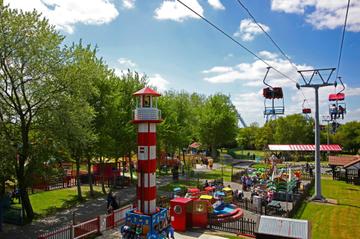 Pleasurewood Hills
Pleasurewood Hills With more than 40 rides and shows for all ages, and an idyllic setting, stretching over 50 acres along the Great Yarmouth coast, Pleasurewood Hills has long been a top destination for a family day out, and recent refurbishments have brought it bang up to date. Pleasurewood is th
Pleasurewood Hills
Pleasurewood Hills With more than 40 rides and shows for all ages, and an idyllic setting, stretching over 50 acres along the Great Yarmouth coast, Pleasurewood Hills has long been a top destination for a family day out, and recent refurbishments have brought it bang up to date. Pleasurewood is th
-
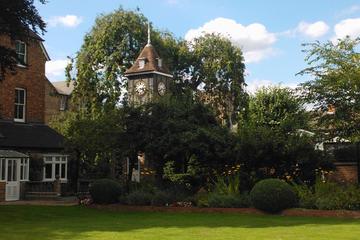 Panacea Museum
Panacea Museum Once the base of a strange cult who followed the writing of a mysterious 18th-century prophetess called Joanna Southcott, the Panacea Society was British eccentricity at its most brilliant. It was founded in 1919 by a woman called Mabel Barltrop, who believed she was a disciple of G
Panacea Museum
Panacea Museum Once the base of a strange cult who followed the writing of a mysterious 18th-century prophetess called Joanna Southcott, the Panacea Society was British eccentricity at its most brilliant. It was founded in 1919 by a woman called Mabel Barltrop, who believed she was a disciple of G
-
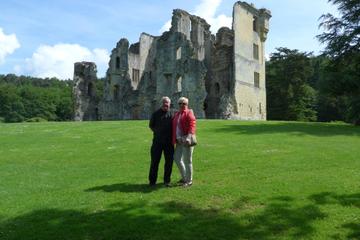 Old Wardour Castle
Old Wardour Castle Perched on a hillside overlooking the lakes and parklands of Wardour Park, the rugged silhouette of Old Wardour Castle makes a dramatic sight and the atmospheric ruins have long been a favorite backdrop of photographers and filmmakers. Pop culture buffs might recognize the roman
Old Wardour Castle
Old Wardour Castle Perched on a hillside overlooking the lakes and parklands of Wardour Park, the rugged silhouette of Old Wardour Castle makes a dramatic sight and the atmospheric ruins have long been a favorite backdrop of photographers and filmmakers. Pop culture buffs might recognize the roman
-
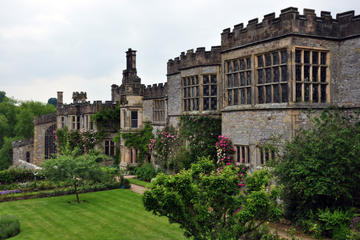 Haddon Hall
Haddon Hall A celebrated example of a medieval manor house, Haddon Hall has a history dating back to the 12th century, although the majority of the current building dates from the 14th through 16th centuries, and has been owned by the Dukes of Rutland for several centuries.The grand estate is perh
Haddon Hall
Haddon Hall A celebrated example of a medieval manor house, Haddon Hall has a history dating back to the 12th century, although the majority of the current building dates from the 14th through 16th centuries, and has been owned by the Dukes of Rutland for several centuries.The grand estate is perh
Total
320 -travel
FirstPage PreviousPage NextPage LastPage CurrentPage:
8/16 20-travel/Page Goto:
 Bibury
Bibury Bibury is a village in the Cotswolds of England and the perfect place to enjoy the beauty of Gloucestershire. It lies along the River Coln, which is a tributary of the River Thames. Visitors can stroll down Arlington Row to admire cottages that were built in the late 1300s as monastic wool
Bibury
Bibury Bibury is a village in the Cotswolds of England and the perfect place to enjoy the beauty of Gloucestershire. It lies along the River Coln, which is a tributary of the River Thames. Visitors can stroll down Arlington Row to admire cottages that were built in the late 1300s as monastic wool
 Beningbrough Hall
Beningbrough Hall Built in 1716 on the Yorkshire meadows, Beningbrough Hall served as a family home, inherited and passed down and around over many generations during the 1700 and 1800s. During the Second World War Beningbrough was called into service and used to house airmen from bomber squadrons
Beningbrough Hall
Beningbrough Hall Built in 1716 on the Yorkshire meadows, Beningbrough Hall served as a family home, inherited and passed down and around over many generations during the 1700 and 1800s. During the Second World War Beningbrough was called into service and used to house airmen from bomber squadrons
 Bassenthwaite Lake
Bassenthwaite Lake One of the Lake District’s largest lakes at 6.4 km in length, Bassenthwaite Lake is best known for its abundant native wildlife, now preserved as part of the region’s only wetland nature reserve. Osprey, Grasshopper Warbler, Curlew, Greylag and Meadow Pipit are among the bird sp
Bassenthwaite Lake
Bassenthwaite Lake One of the Lake District’s largest lakes at 6.4 km in length, Bassenthwaite Lake is best known for its abundant native wildlife, now preserved as part of the region’s only wetland nature reserve. Osprey, Grasshopper Warbler, Curlew, Greylag and Meadow Pipit are among the bird sp
 Balliol College
Balliol College Balliol College is the oldest continuously operated college in the University of Oxford and was created around 1263. The oldest parts of the college include the north and west sides of the front quadrangle and the medieval hall. The Balliol Library holds a collection of medieval ma
Balliol College
Balliol College Balliol College is the oldest continuously operated college in the University of Oxford and was created around 1263. The oldest parts of the college include the north and west sides of the front quadrangle and the medieval hall. The Balliol Library holds a collection of medieval ma
 Aysgarth Falls
Aysgarth Falls Immortalized on-screen in Kevin Costner’s Robin Hood Prince of Thieves and famously inspiring artists and poets like Ruskin, Turner and Wordsworth, the Aysgarth Falls have long been renowned as a local beauty spot. The three-tiered falls are undeniably photogenic, with thousands of
Aysgarth Falls
Aysgarth Falls Immortalized on-screen in Kevin Costner’s Robin Hood Prince of Thieves and famously inspiring artists and poets like Ruskin, Turner and Wordsworth, the Aysgarth Falls have long been renowned as a local beauty spot. The three-tiered falls are undeniably photogenic, with thousands of
 Ashmolean Museum
Ashmolean Museum Not only Britain’s oldest public museum but also among the oldest in the world, the Ashmolean is more than just a museum – it’s an internationally renowned institution and one of Oxford’s most visited attractions. Founded in 1683, the esteemed museum is one of four of the Universi
Ashmolean Museum
Ashmolean Museum Not only Britain’s oldest public museum but also among the oldest in the world, the Ashmolean is more than just a museum – it’s an internationally renowned institution and one of Oxford’s most visited attractions. Founded in 1683, the esteemed museum is one of four of the Universi
 Ascot
Ascot A wealthy suburban town in Berkshire, Ascot is west of London and is mightily popular with affluent types who commute into London daily. It is close to Windsor Castle, the Great Park and Legoland but is chiefly renowned for its racecourse, which was founded by Queen Anne in 1711. Regular hor
Ascot
Ascot A wealthy suburban town in Berkshire, Ascot is west of London and is mightily popular with affluent types who commute into London daily. It is close to Windsor Castle, the Great Park and Legoland but is chiefly renowned for its racecourse, which was founded by Queen Anne in 1711. Regular hor
 ArcelorMittal Orbit
ArcelorMittal Orbit A spiraling red steel tower looming 114 meters over the Queen Elizabeth Olympic Park, the ArcelorMittal Orbit’s bold design has polarized opinions since its conception. There’s no denying, however, that it’s an impressive feat of structural engineering and well on its way to be
ArcelorMittal Orbit
ArcelorMittal Orbit A spiraling red steel tower looming 114 meters over the Queen Elizabeth Olympic Park, the ArcelorMittal Orbit’s bold design has polarized opinions since its conception. There’s no denying, however, that it’s an impressive feat of structural engineering and well on its way to be
 Apsley House (Wellington Museum)
Apsley House (Wellington Museum) Few addresses hold the majesty of ‘Number One London’, the official address for the central London abode of Apsley House, located at Hyde Park Corner. Once home to the Duke of Wellington, the Georgian manor was built between 1771-1778 and remains remarkably preserv
Apsley House (Wellington Museum)
Apsley House (Wellington Museum) Few addresses hold the majesty of ‘Number One London’, the official address for the central London abode of Apsley House, located at Hyde Park Corner. Once home to the Duke of Wellington, the Georgian manor was built between 1771-1778 and remains remarkably preserv
 All Souls College
All Souls College One of the constituent colleges of the University of Oxford is All Souls College, though the official name is the Warden and the College of the Souls of All Faithful People Deceased in the University of Oxford. It is primarily a graduate research institution with no undergraduate
All Souls College
All Souls College One of the constituent colleges of the University of Oxford is All Souls College, though the official name is the Warden and the College of the Souls of All Faithful People Deceased in the University of Oxford. It is primarily a graduate research institution with no undergraduate
 Aintree Racecourse
Aintree Racecourse A Liverpool and sporting institution since the 1830s, Aintree Racecourse is synonymous with Britain’s most famous horserace, the legendary Grand National.The Grand National is a particularly difficult steeplechase for horses and riders, with 16 infamous obstacles to leap includi
Aintree Racecourse
Aintree Racecourse A Liverpool and sporting institution since the 1830s, Aintree Racecourse is synonymous with Britain’s most famous horserace, the legendary Grand National.The Grand National is a particularly difficult steeplechase for horses and riders, with 16 infamous obstacles to leap includi
 Adelphi Theatre
Adelphi Theatre Although initially founded in 1806, the Adelphi Theatre opened under its current name in 1819, and quickly made a name for itself, hosting stage adaptations of Charles Dickens and Walter Scotts works. Today, the historic theatre remains a leading venue in London’s West End theater
Adelphi Theatre
Adelphi Theatre Although initially founded in 1806, the Adelphi Theatre opened under its current name in 1819, and quickly made a name for itself, hosting stage adaptations of Charles Dickens and Walter Scotts works. Today, the historic theatre remains a leading venue in London’s West End theater
 Durham Castle
Durham Castle Durham Castle was built in 1072 by the order of William the Conqueror, who intended it as a statement of power over the local Saxons as well as a bulwark against Scotland to the north. Like Windsor Castle, it is an outstanding example of the “motte-and-bailey” style of fortress, wher
Durham Castle
Durham Castle Durham Castle was built in 1072 by the order of William the Conqueror, who intended it as a statement of power over the local Saxons as well as a bulwark against Scotland to the north. Like Windsor Castle, it is an outstanding example of the “motte-and-bailey” style of fortress, wher
 Wistmans Wood
Wistmans Wood At the heart of the Dartmoor National Park, the ancient oak forest of Wistman’s Wood is one of few woods left in England that date back to prehistoric times, and it’s an eerily beautiful sight. With its dramatically twisted oak trees climbing with lichen, giant moss-blanketed boulder
Wistmans Wood
Wistmans Wood At the heart of the Dartmoor National Park, the ancient oak forest of Wistman’s Wood is one of few woods left in England that date back to prehistoric times, and it’s an eerily beautiful sight. With its dramatically twisted oak trees climbing with lichen, giant moss-blanketed boulder
 Stokesay Court
Stokesay Court With its stately Jacobean-style façade, magnificent oak furniture and expanse of rolling parklands, Stokesay Court is a striking example of a late-Victorian English country estate. Built by the Allcroft family in the 19th-century, the estate remains a family home to this day, despit
Stokesay Court
Stokesay Court With its stately Jacobean-style façade, magnificent oak furniture and expanse of rolling parklands, Stokesay Court is a striking example of a late-Victorian English country estate. Built by the Allcroft family in the 19th-century, the estate remains a family home to this day, despit
 St George’s Distillery
St George’s Distillery The making of whisky is more often associated with Scotland than England, but there is one distillery south of the border – and an award-wining one at that – located in the rural flatlands of Norfolk. Winners of the European Whisky of the Year award for 2015, the owners of T
St George’s Distillery
St George’s Distillery The making of whisky is more often associated with Scotland than England, but there is one distillery south of the border – and an award-wining one at that – located in the rural flatlands of Norfolk. Winners of the European Whisky of the Year award for 2015, the owners of T
 Pleasurewood Hills
Pleasurewood Hills With more than 40 rides and shows for all ages, and an idyllic setting, stretching over 50 acres along the Great Yarmouth coast, Pleasurewood Hills has long been a top destination for a family day out, and recent refurbishments have brought it bang up to date. Pleasurewood is th
Pleasurewood Hills
Pleasurewood Hills With more than 40 rides and shows for all ages, and an idyllic setting, stretching over 50 acres along the Great Yarmouth coast, Pleasurewood Hills has long been a top destination for a family day out, and recent refurbishments have brought it bang up to date. Pleasurewood is th
 Panacea Museum
Panacea Museum Once the base of a strange cult who followed the writing of a mysterious 18th-century prophetess called Joanna Southcott, the Panacea Society was British eccentricity at its most brilliant. It was founded in 1919 by a woman called Mabel Barltrop, who believed she was a disciple of G
Panacea Museum
Panacea Museum Once the base of a strange cult who followed the writing of a mysterious 18th-century prophetess called Joanna Southcott, the Panacea Society was British eccentricity at its most brilliant. It was founded in 1919 by a woman called Mabel Barltrop, who believed she was a disciple of G
 Old Wardour Castle
Old Wardour Castle Perched on a hillside overlooking the lakes and parklands of Wardour Park, the rugged silhouette of Old Wardour Castle makes a dramatic sight and the atmospheric ruins have long been a favorite backdrop of photographers and filmmakers. Pop culture buffs might recognize the roman
Old Wardour Castle
Old Wardour Castle Perched on a hillside overlooking the lakes and parklands of Wardour Park, the rugged silhouette of Old Wardour Castle makes a dramatic sight and the atmospheric ruins have long been a favorite backdrop of photographers and filmmakers. Pop culture buffs might recognize the roman
 Haddon Hall
Haddon Hall A celebrated example of a medieval manor house, Haddon Hall has a history dating back to the 12th century, although the majority of the current building dates from the 14th through 16th centuries, and has been owned by the Dukes of Rutland for several centuries.The grand estate is perh
Haddon Hall
Haddon Hall A celebrated example of a medieval manor house, Haddon Hall has a history dating back to the 12th century, although the majority of the current building dates from the 14th through 16th centuries, and has been owned by the Dukes of Rutland for several centuries.The grand estate is perh